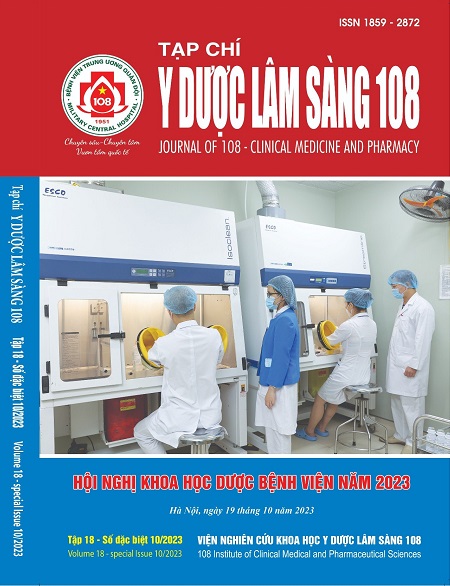Signal detection and preventability of coagulation disorders related to anticoagulants: An analysis of the Vietnamese Pharmacovigilance Database
Main Article Content
Keywords
Abstract
Objective: To investigate signals and preventability of coagulation disorders related to anticoagulants in the National Pharmacovigilance database. Subject and method: A cross-sectional retrospective study of spontaneous ADR reports registered at the National DI & ADR Center from 2017 to 2021. Result: Out of 174 ADR reports on coagulation disorders related to anticoagulants, 100 (57.5%) reports were assessed as preventable ADRs (pADRs). Coagulation disorders were diverse with the highest reported rates of elevated INR (20.7%), administration site hemorrhage (19.5%), and gastrointestinal hemorrhage (19.0%). Signals were detected with acenocoumarol, enoxaparin, heparin, dabigatran, and rivaroxaban. Enoxaparin was the most common drug with pADRs (66 cases), followed by acenocoumarol (21 cases). Most pADRs were related to drug interactions (92 cases). Conclusion: The risk of coagulation disorders attributed to anticoagulants has been demonstrated by this study. To minimize adverse outcomes (especially hemorrhage) of these high-risk medications, risk management for anticoagulants in clinical settings should be implemented, focusing on potentially preventable causes identified in this study.
Article Details
References
2. Elaine M Hylek (2003) Complications of oral anticoagulant therapy: Bleeding and nonbleeding, rates and risk factors. Semin Vasc Med 3(3): 271-278.
3. Bộ Y tế (2022) Hướng dẫn chẩn đoán và điều trị một số bệnh lý huyết học.
4. Rose Anne (2015) Anticoagulation Management: A Guidebook for Pharmacists. Springer International Publishing AG Switzerland.
5. WHO, Retrieved, from https://www.whocc. no/atc_ddd_index/.
6. Eugène P van Puijenbroek, Andrew Bate, et al. (2002) A comparison of measures of disproportionality for signal detection in spontaneous reporting systems for adverse drug reactions. Pharmacoepidemiol Drug Saf 11(1): 3-10.
7. WHO (2014) Reporting and learning systems for medication errors: The role of pharmacovigilance centres.
8. MICROMEDEX®. "Retrieved, from http://www. micromedexsolutions.com/micromedex2/libraria.
9. Mascolo A, Ruggiero R et al (2019) Preventable cases of oral anticoagulant-induced Bleeding: Data from the spontaneous reporting system. Front Pharmacol 10: 425.
 ISSN: 1859 - 2872
ISSN: 1859 - 2872
